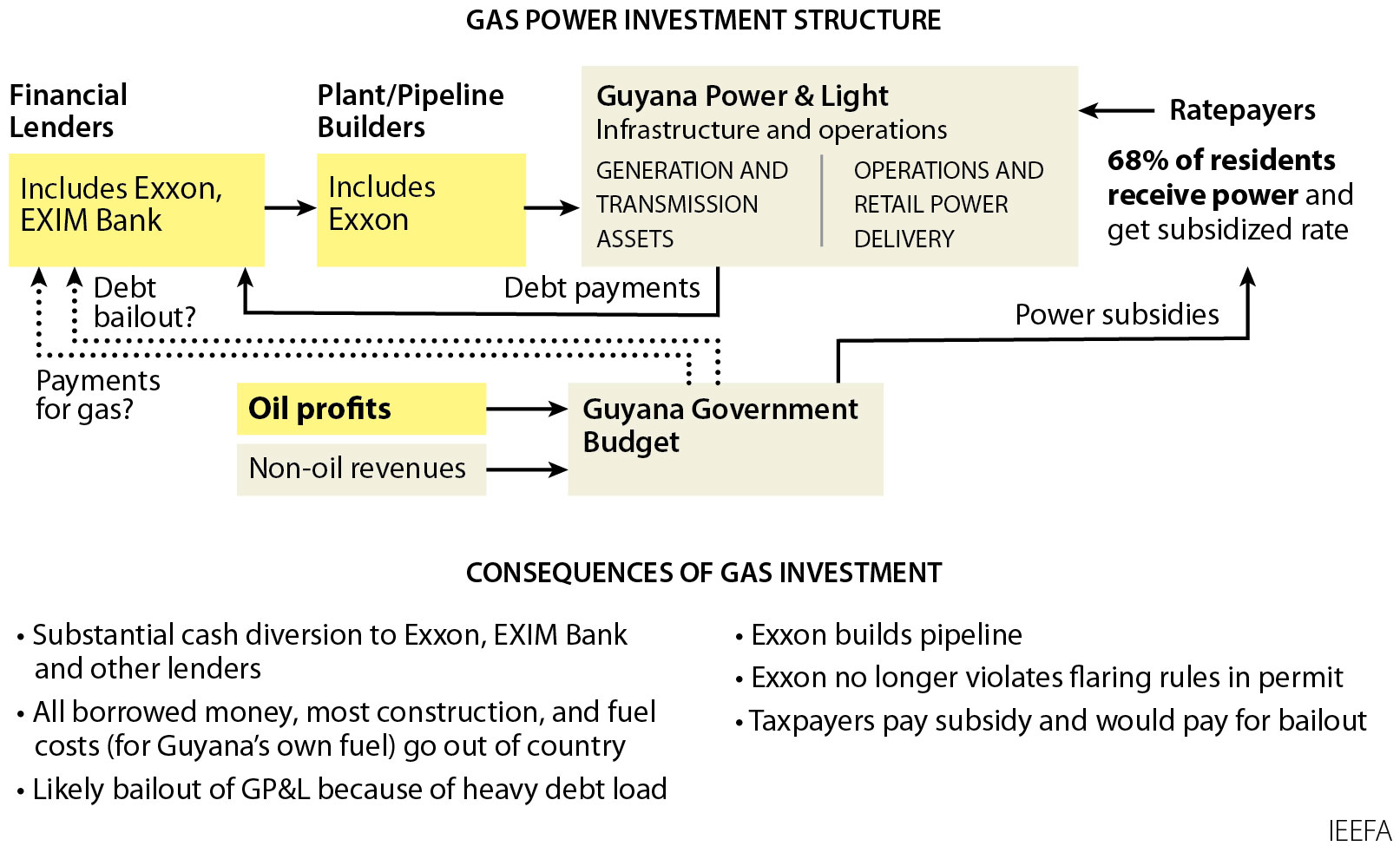Guyana Gas to Energy project is unnecessary and financially unsustainable

Solar is a better investment for taxpayers, the economy, and climate goals
Key Takeaways:
The Guyana Gas to Energy Project will result in a substantially overbuilt electrical system.
A new natural gas plant would be capable of generating far more electricity than Guyana Power & Light (GPL) customers are likely to need over the coming decade.
ExxonMobil would gain the most from the Gas to Energy Project, through profits from pipeline construction, lending money to Guyana, and selling natural gas.
Solar would cost less, reduce costs for ratepayers, generate more local jobs and put Guyana on a path toward meeting its climate goals of 100% renewable energy.
Despite pledges to move to 100% renewable energy, Guyana’s proposed Gas to Energy project will use natural gas from offshore wells to produce electricity and crowd out solar expansion, according to a new Institute for Energy Economics and Financial Analysis (IEEFA) report. The plan will also put a substantial debt load on Guyana Power & Light (GPL), the nation’s electric utility.
The new natural gas plant will contribute to an overbuilt grid that will supply more electricity than GPL needs to meet the needs of the Guyanese people. The new debt incurred will likely leave the government of Guyana to bail out the utility. Overbuilding with a new natural gas plant will undermine Guyana’s ability to meet its climate goals and cost taxpayers more over time.
Instead of spending billions for an overbuilt, fossil fuel-reliant grid that will leave Guyana in debt for years, IEEFA found that Guyana could use its oil profits for a reliable, low-cost rooftop solar solution that would save billions while providing low-carbon electricity to the entire country.
“The alternative—substantial investment in solar energy—will help Guyana meet its climate goals. An investment in rooftop solar panels for residents and businesses will provide a direct benefit to individual Guyanese households in the form of solar panels and low electricity costs.,” said Cathy Kunkel, IEEFA consultant and co-author of the report. “It will employ local people and help small contracting businesses grow.”
Guyana is poised to embark on the path of rapidly overbuilding the electricity generation system that serves about two-thirds of its population. By significantly overbuilding fossil fuel generation, IEEFA believes GPL will crowd out the possibility of renewable energy.
“The Gas to Energy plan will cause the Guyanese government and its utility to go into debt for something that is unnecessary. In the end future oil profits will be squandered,” said Tom Sanzillo, IEEFA director of financial analysis. “There are long-term decisions that are being made here that will increase taxpayer costs and benefit foreign corporate and financial interests. An aggressive rooftop solar program would take profit oil and provide households with something they can see and touch, reduce monthly utility bills and put people to work in every community in Guyana.”
IEEFA estimates that the amount of capital investment poised to be spent on the Gas to Energy project would be more than enough to provide reliable power to every household in Guyana via rooftop solar and storage systems. A path focused on renewable energy is one that would benefit the public and help the government achieve its climate goals.












